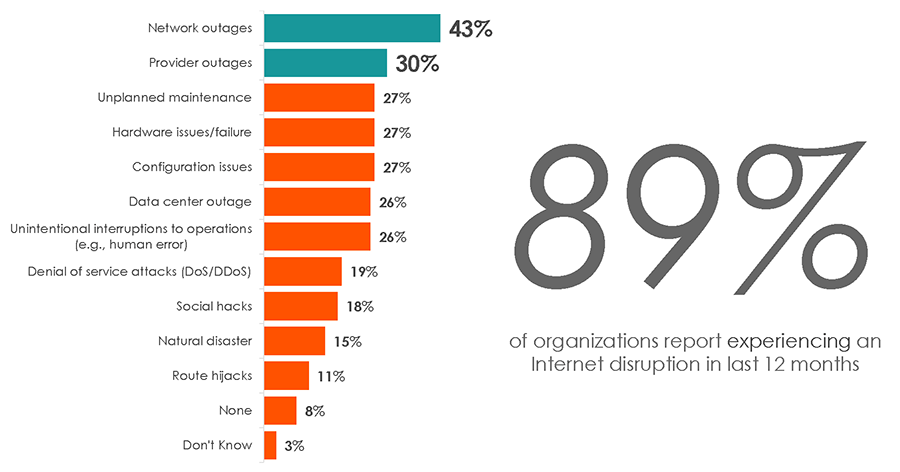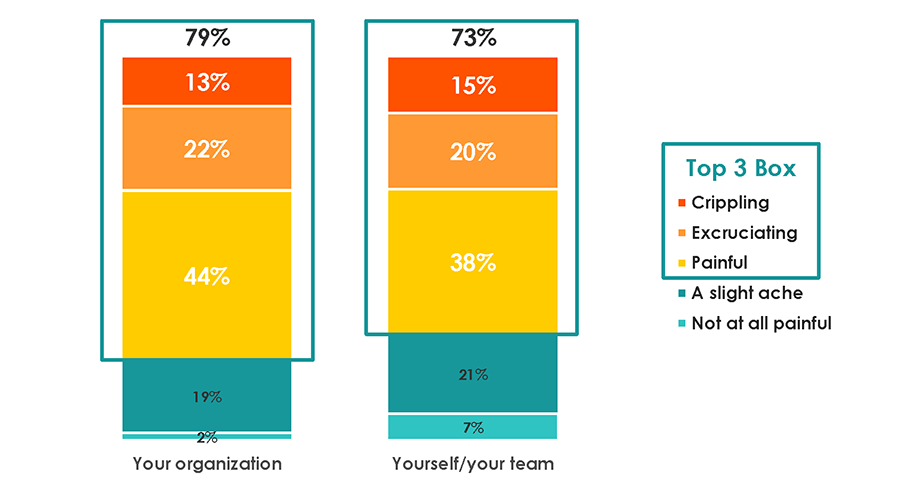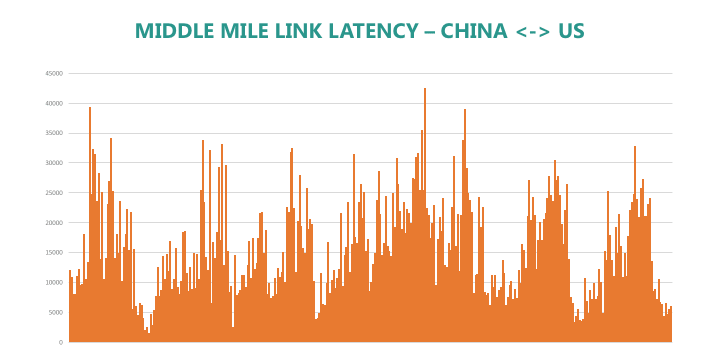89% of Organizations Report Network Disruption: Here’s How to Stop It
In Silicon Valley, a disruption is a cause for celebration – to “disrupt” technology is to completely change the model for the way things get done and make the new way more efficient and effective than the old.
So when we at Aryaka talk about “disrupting” the enterprise WAN, we mean to say that we’re changing the way we deliver network connectivity entirely – to help your organization avoid real disruption in your network performance.
The “Bad” Disruption

Traditionally, network disruption was a full outage, when some or all of your end users lost connection to the WAN. And while those disruptions are still a threat, they’re less common than they used to be, due to smarter network design, backup links, and failovers.
So why did 89% of organizations still report network disruption in the past year, according to a Spiceworks survey on disruption?
Disruption can take many forms, from dropped calls or lag during video conferences, slow data transfer, difficulty loading dynamic content, dropped VPN connections, and poor connectivity in remote areas or across oceans or continents.
79% of IT staff say that disruptions due to network volatility can range from painful to crippling for their organization – which means that business and the bottom line are being greatly affected.

For example, Sasaki, an international interdisciplinary planning and design firm providing consulting and design services, found their ability to project manage and meet deadlines affected when employees attempted to collaborate between their Massachusetts and China offices using the public Internet and secure remote network software. Between the two sites, latency kept the speed low and caused dropped connections. As a result, the team had to push back their deadlines and constantly renegotiate timelines due to inefficient data transfer.
Both latency and packet loss can be big and constant disruptions for end users, especially when data is traversing a global network. Even with MPLS, which is meant to provide a more stable and reliable user experience than the public Internet, unless you invest heavily in more bandwidth and WAN Optimization, both congestion and distance can affect the speed and quality with which data reaches your end users.
As Springman Lee, Sasaki’s Network Manager noted, MPLS wouldn’t have solved their connectivity problem: “Even if we could have afforded to have our own MPLS network to our China office, which was already very expensive to implement, and we still need to manage the optimization part, that’s too much trouble for me.”
The Core of the Problem
For Sasaki and global businesses around the world, the core of the problem rests with the middle mile. At this moment, only a few networking solutions address the middle mile at all – and even fewer do it well globally.

Sample latency fluctuation between two sites in China and the U.S.
If you can solve for latency or congestion along the middle mile, you will have essentially solved the problem of disruption in global deployments; however, that solution is often costly and requires more hardware and human resources to manage.
Most SD-WAN deployments rely on the public Internet to carry data to and from cloud-hosted applications and platforms. However, the further that data must travel over the public Internet, the more likely it is to transfer slowly. Congestion plagues the public Internet, as data from thousands of users could be attempting to transit at once. In addition, because it’s not privately owned, there is no WAN Optimization or acceleration that can be applied over the middle mile.
While this is less of a problem over short distances, such as in regional SD-WAN deployments, the lack of stability and reliability, as well as optimization makes application response time slow and problematic.
MPLS with WAN Optimization can solve the problem of congestion and low throughput; however, even those benefits can be lost over deployments spanning oceans and continents, as application response time is a function of distance. This makes an investment into MPLS and WAN Optimization costly, but not necessarily effective.
Disrupting the Disruption
If the middle mile is the problem, then the solution is Aryaka’s managed SD-WAN. With a purpose-built, software-defined network, Aryaka shortens the distance and provides an optimized network to reduce latency and packet loss.
With 28 points of presence (POPs) located within 30 milliseconds of 95% of the world’s business users, Aryaka’s network removes the barrier of latency for global data transfer. No matter how far business users are from a POP, they are much closer than they would be if their data were to travel over an MPLS link or the public Internet. The POPs essentially eliminate the problem of getting data across the world.
In addition, Aryaka’s built-in WAN Optimization and acceleration, including its Smartlink technology, reduces packet loss by about 20x while accelerating application performance up to 40x. No longer do IT departments need to invest heavily in extra hardware to optimize throughput or the people to manage it – Aryaka provides everything that enterprises need for fast data and application performance as a standard part of the network.
For Sasaki, the answer was as simple as deploying Aryaka between their Boston and China offices, immediately speeding data transfer and enabling real-time collaboration. For Sasaki, that meant a 69% decrease in application response time versus MPLS and a 94% decrease versus the public Internet.
It wasn’t just Sasaki’s management that noticed how projects were finally moving forward on time and without a hitch: According to Lee, “A number of competitors were surprised to see that we could collaborate without any delay. The secret recipe is Aryaka. I have referred Aryaka to several our competitors.”
Using our smart technology, years of experience in network design, and proprietary algorithms, Aryaka is disrupting the way businesses build the enterprise WAN to keep it from being disrupted.
We invite you to try Aryaka on your most difficult sites and experience the difference for yourself. Sign up for a proof of concept here.








